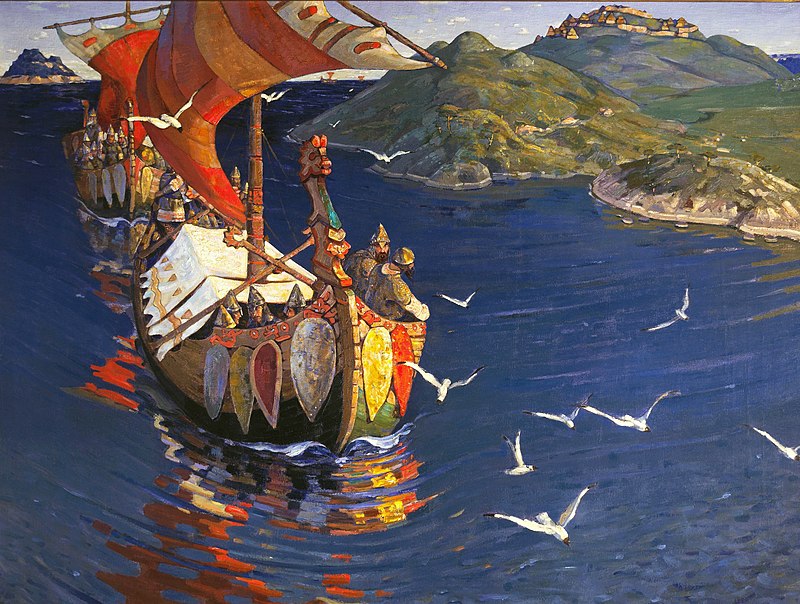Moscow, Russia - One of my favorite museums in Russia is the Rerikh Museum, dedicated to the life and works of Nicholas Roerich. Nevermind the different spellings: it's a transliteration issue.
Last summer in St Petersburg, I spent a day or two at the Russian Museum, and I fell in love with the work by this artist, explorer and spiritual seeker. His primitive style and intense colors evoke a mystical, magical past, often depicting ancient Russia and other exotic lands. This is the painting that I picked out to hang in my living room.
When I describe Roerich as an explorer and spiritual seeker, those are not throw-away words. In 1920, he and his wife founded the Agni Yoga Society. And in the late 1920s, they undertook a five-year expedition to Central and Southeastern Asia, meeting with spiritual teachers and assisting archaeological excavations at sites in India, Tibet, the Altai and Mongolia. The Roerich Museum in Moscow displays hundreds of artefacts that were uncovered during this expedition, as well as dozens of writings and paintings that the author produced as a result. This guy was prolific, to say the least.

In 1927, the expedition was detained by the Tibetan government. All contact with the outside world was cut off, as the group was forced to endure the harsh winter sleeping in tents and surviving on minimal provisions. Five men died. They were eventually released, in early 1928, and they made their way to India, which was their final destination.
One of Roerich's pet projects was cultural preservation. The idea behind his Pax Cultura movement was to preserve the crucial link between culture and peace. He advocated that creative works - art, architecture, libraries and such - should be protected from the ravages of war, so that our cultures can retain links to their past and resources for the future. Cultural institutions who participated in this movement would fly the Pax Cultura "Banner of Peace" on their premises, thus declaring themselves neutral in any conflict that might be taking place around them. Sort of like a cultural Red Cross.
In 1929, Roerich was nominated for a Nobel Peace Prize for his efforts (the first of three such nominations). In 1935, FDR signed the Roerich Pact, making the US one of 21 nations to participate in this initial effort.
One of Roerich's crazy dreams was to found a new country on the basis of Buddhist spiritual principals. Apparently, his idea was to unite certain regions of Russia, Mongolia, China and Tibet, with Roerich himself acting as the secular leader, ruling in conjunction with the spiritual leader Pancem Lama. Roerich never acted on this plan, but you can imagine how that idea would have gone over with Uncle Joe Stalin and Chairman Mao.
Despite the fact that this plan never came to fruition, Roerich's legacy is rich. The Agni Yoga Society, now based in New York, still publishes books and articles attempting to bridge the gap between ancient Eastern philosophies and modern belief systems. Museums in New York, Moscow and Nagar, Kullu (India) are dedictaed to exhibiting his paintings.
And - perhaps most significantly - Pax Cultura is still touted by peacemakers around the world. As Roerich himself said, "Where there is Peace, there is Culture. Where there is Culture, there is Peace." It's not that complicated, but that's true of all the important things.





No comments:
Post a Comment